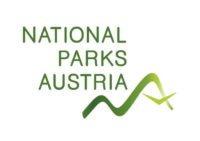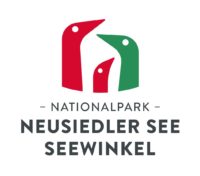It wouldn’t be a EUROPARC Conference without field trips! Through them participants can see how things are happening on the ground. Here we are also following the “Big Five” topics.
Register now!
1) Danube Floodplains National Park
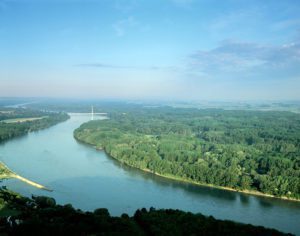
National Park Donau-Auen © Popp
Situated between Vienna and Bratislava, the Donau-Auen National Park preserves the last remaining major wetlands in Central Europe. Here, the Danube is still free flowing and is the lifeline of the Park. It creates a habitat for numerous animals and plants, some of which are rare species. Accompanied on guided walking tours or on boats, visitors have ample opportunity to discover the fascinating world of the wetland. A wealth of information is available at the schlossORTH National Park Centre in Orth.
Main attractions:
- Lookout from the Hainburg Hills over Danube and Morava River
- Introduction to the concept of schlossORTH Visitor Centre
- Boat trip on the Danube and on one of its branches
Logistics:
Bus drive from the conference venue to the NP (approx. 1:20 hours, one-way). Walking distance in the NP: max. 3 km. Guided tour in the DFNP including a boat trip (inflatable craft). Sturdy shoes are recommended. Please bring your binoculars.
Overarching topic: Parks of the future.
2) Forests in the Danube Floodplains
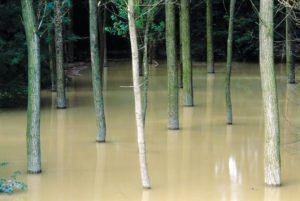
Foodplain Forest © Kovacs
One of the first major infrastructure projects in Austria that was canceled after extensive and long-lasting protests in 1984 led to the foundation of Austria’s third National Park: the Danube floodplains between Vienna and Bratislava. The forests in the floodplains that were threatened by uprooting – in order to create space for a hydropower plant – are now state owned resp. property of WWF Austria. Today they represent large parts of the Danube Floodplains National Park.
Main attractions:
- Visit to the core area of the National Park
- Introduction to the key habitats of the forests and their management
Logistics:
Bus drive from the conference venue to the Danube (approx. 1:20 hours, one-way). Total walking distance in the forests: max. 4 km. Guided tour in the floodplain forests. Sturdy shoes are recommended. Please bring your binoculars.
Overarching topic: Parks of the future.
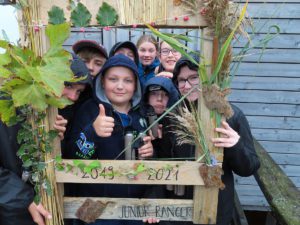
Junior Rangers @ Neusiedlersee
3) Junior Rangers in the Lake Neusiedl National Park
This will be a guided tour with Junior Rangers. Nature education programs have a long tradition in the area, starting long before the National Park was established in 1993. Both WWF Austria, running its own education center near Apetlon until 2010, and Naturschutzbund (Austrian League for Nature Conservation) prepared the ground for today’s comprehensive program of the National Park – for schools as well as for local children during their holidays. One special project is focusing on the training program for Junior Rangers.
Main attractions:
- Guided tour with Junior Rangers
- Visit to the National Park’s Education Center in Illmitz
- Introduction to the (transboundary) nature education activities
- Entering a hide in the reeds
Logistics:
40 km bicycle ride from the conference venue to Illmitz and to Lake Neusiedl: Lange Lacke, Seewinkelhof, NP Education Center (plus ev. Kindergarten Illmitz), lunch break at the beach, birdwatching hide in the reeds, Sandeck, stopover at NP School Cluster Illmitz-Apetlon. Total cycling distance in the Park: ca. 35 km. Please bring your binoculars.
Overarching topic: youth.
4) Sodic Lakes in Lake Neusiedl National Park
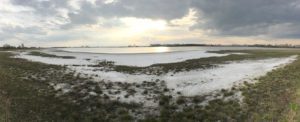
Sodic Lakes
These lakes are the westernmost of their kind on the continent, periodically dry, extremely shallow, and with a salty soil. Only one third of these sensitive and valuable habitats have survived in the 20th century. Now they are preserved in the Austrian Part of Lake Neusiedl National Park as breeding, resting or feeding places for numerous rare bird species. It is mainly the sodic lakes that attract birdwatchers and nature photographers from across Europe. Over-utilization of groundwater resources are the main threat to the salt pans.
Main attractions:
Route: Lange Lacke, Zweierkanal, tiefster Punkt Österreichs, NP Visitor Center, Zicksee.
- Lange Lacke
- Introduction to the salt pans of the Seewinkel area in the NP’s Visitor Center, Illmitz
- Watching migratory and breeding birds
- Last point: tasting soda from the salt pans (or a special white wine)
Logistics:
35 km bicycle ride from the conference venue to Lange Lacke (Apetlon), NP Visitor Center, Zicksee (Illmitz). We will visit some of the sodic lakes of the Seewinkel area. Please bring your binoculars.
Overarching topic: biodiversity.
5) Transboundary Bicycle Tour in the Hanság Area – Bike
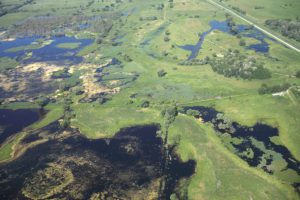
© Fertő-Hanság-Nationalpark
This former part of Lake Neusiedl’s basin has been dewatered since the late middle ages. Moreover, large parts of the area’s natural forest were destroyed by a transformation into poplar plantations during the communistic period in Hungary. The renaturation efforts of the Fertő-Hanság National Park are one of the most successful and visible activities, leading to a comeback of several species and creating a stepping stone between the Danube floodplains and Lake Neusiedl area.
Main attractions:
- Experiencing the former eastern part of Lake Neusiedl
- Visit to the Hanság museum in the village of Öntésmajor
- Discovering sandy habitats in a unique wetland forest
- Watching migratory and breeding birds in the first restored habitat
Logistics: Tour with bicycles in the transboundary National Park:
Crossing the state border at the Baron Berg Bicycle Bridge, reaching the NP’s Hanság area (alder forest, grazing activities), lunch break at the historic Esterházy Madarvarta (ornithologic station, 1931), Osli Hany renaturation area, Hanság Museum in the village of Öntesmajor. Total cycling distance: approx. 60 km. Experiencing the fen and the alder forests of the Hanság area. Passport required. Please bring your binoculars.
Overarching topic: people and culture.
6) Waters and Reeds – Canoe and Culinary in the Transboundary World Heritage Site
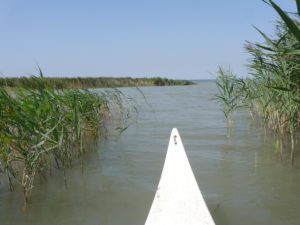
Canoeing through the reeds
The southern part of Lake Neusiedl, situated in Hungary, is almost completely covered by reeds. In the frame of the visitor program, the National Park is organizing canoe trips into this jungle. These tours raise awareness for the immense biodiversity that exists here. Nearby in Fertőrákos, the huge former lime stone quarry offers an insight into the geologic history of the site.
Main attractions:
- Canoe trip in the reed belt of Lake Neusiedl
- Visit to the lime stone quarry of Fertőrákos and the nature education trail
Logistics:
! Starting at 8.00 from Vila Vita !
50 km bike ride from the conference venue to Fertőrákos, Hungary (via boat ferry from Illmitz to Mörbisch). Canoe trip: max. 3 hours. Excursion in the southwestern shore of Lake Neusiedl. Passport required. Sturdy shoes are recommended. Please bring your binoculars.
Overarching topic: people and culture / transboundary.
7) Hiking in the Sopron / Ödenburg Mountains (Harka – Ágfalva, Károly-magaslat)

Sopron Mountains
Situated some 300 meter above the water level of Lake Neusiedl, the Sopron Mountains and the Zarhalmi Forest show completely different ecosystems compared to the lowlands of the Seewinkel and Hanság area: Deciduous woodland is dominating here. The historic town of Sopron / Ödenburg with its 60.000 inhabitants – more than all the other settlements around Lake Neusiedl – has a lot of stories to be told from Roman times onwards. A lookout from the Kecske Hegy tower built in the 1930s offers an excellent view over the Lake.
Main attractions:
- Archaeological excavations in the centre of Sopron
- Mithras Grotto from Roman times
- Hiking in the forests with a view to the steppe
- Exhibition about the mass flight of GDR citizens in 1989
- Last point: Kékfrankos wine tasting
Logistics:
Bus drive from the conference venue to Sopron (approx. 1 hour one-way). Total walking distance: 15 km (hilly landscape). Hiking tour in the easternmost foothills of the Alps (Zarhalmi Forest, Nature Park). Passport required. Sturdy shoes are recommended. Please bring your binoculars.
Overarching topic: people and culture.
8) Technology in Monitoring and Research
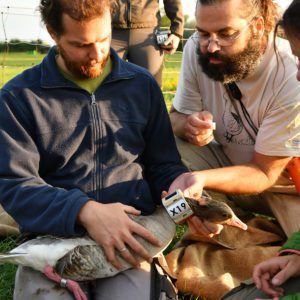
Monitoring activities
Advanced technical solutions lead to new approaches and possibilities in Research and Monitoring. In the frame of the project “Reed Sounds” – a cooperation with big international ICT company Huawei and Vienna University – Lake Neusiedl National Park is surveying bird populations in the reed belt of the Lake. Moreover, the use of Geographical Information Sytems in the protected habitats makes work more efficient and increases the available data.
Main attractions:
- Insights in the use of new technologies in Lake Neusiedl National Park
- Visit of different habitats of Lake Neusiedl National Park
- Watching birds and other wildlife
- Last point: National Park Centre Illmitz (with a short overview of the topic)
Logistics:
Bus drive from the conference venue to various locations in Lake Neusiedl National Park. Total walking distance: max. 5 km (flat terrain, gravel roads). Combined bus and hiking tour. Bring your binoculars.
Overarching topic: biodiversity.
9) Cultural Heritage & Cultural Landscape in Nature Park Rosalia – Kogelberg
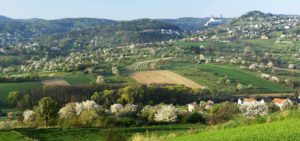
Baumblüte bei Forchtenstein
No towns, just villages: 13 of them have established a Nature Park in the early 2000s, and since then they succeed in raising awareness for their joint natural heritage. There is almost no tourism, but the new infrastructure for nature experience is highly valued by locals. One of the assets is the ongoing utilization of traditional orchards. The Park’s management shows 100 varieties of regional fruit trees in a garden, used for educational purposes. The cultural highlight of the Nature Park is Forchtenstein Castle, a fortress built by the Esterházy family.
Main attractions:
- Visit to Esterházy Castle in Forchtenstein, guided tour
- Excursion to a typical extensive orchard and to the fruit tree garden
- Hiking to the „Teichwiesen”, a small wetland, for watching birds
- Last point: Werkstatt Natur, a nature education centre run by the Burgenland Hunting Association
Logistics:
Bus drive from the conference venue to the Forchtenstein Castle (approx. 1 hr 20’ one-way). Total walking distance: max. 8 km. Traditional extensive orchards, sustainable development in a rural area. Passport required. Sturdy shoes are recommended. Please bring your binoculars.
Overarching topic: people and culture.
10) Sustainable Agriculture – on a Large Scale
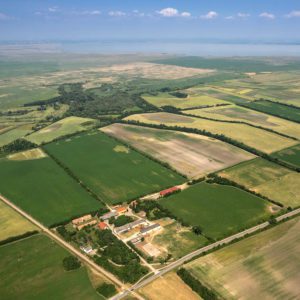
Seehof, Esterhazy
The Esterházy Foundation, based in Burgenland’s capital Eisenstadt, demonstrates that organic agriculture is feasible even on a very large scale, compared to the small agricultural structures in Austria. One example is the so-called „Seehof”, close to Lake Neusiedl, with a focus on crop farming and stock farming. High quality wine production is the second important source of income, shown in the facilities of the Esterházy wine house near Eisenstadt.
Main attractions:
- Visit to the „Seehof” economic unit and Green Energy Campus
- Visit to the Esterházy Weingut in Trausdorf, near Eisenstadt
- Last point: View from the Gloriette in Fertőboz, on the way back from Trausdorf
Logistics:
Bus drive from the conference venue to Donnerskirchen (approx. 1 hour), from there to Lackenbach (approx. 50’). Total walking distance: max. 3 km. Visit to two examples of organic agriculture on a large scale. Passport required. For the stopover at Fertöboz, please bring your binoculars.
Overarching topic: biodiversity.
11) Alluvium: The Jungle between the Danube Arms of Szigetköz
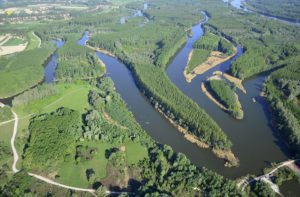
© Pisztrang Kör
The Szigetköz area, a Nature Park and landscape protected area along the Hungarian border with Slovakia, consists of alluvial deposits from
the Danube. Upstream, this „island” reaches the border triangle with Austria, downstream it ends close to Győr, at the confluence of the Little Danube with the main river. A nature education NGO is successfully running a camp in the village of Dunasziget, offering a wide range of programs for schools and families. These programs facilitate the understanding of the ecosystem services of this large wetland, but also communicate the fascination of authentic, individual nature experience.
Main attractions:
- Visit to the nature education centre of the NGO Pisztráng Kör in Dunasziget
- Introduction to floodplain area along the Hungarian – Slovakian border during a canoe tour.
- Guided walk into the backwater area
Logistics:
Bus drive from the conference venue to Dunasziget, Hungary (approx. 1 hour 15’). Total walking distance: max. 5 km. Visit to the wetland between the Danube and the Little Danube (if possible canoe tour). Passport required. Sturdy shoes are recommended. Please bring your binoculars.
Overarching topic: biodiversity / transboundary.
12) Highlights of the Transboundary World Heritage Site – from Rust to Esterháza
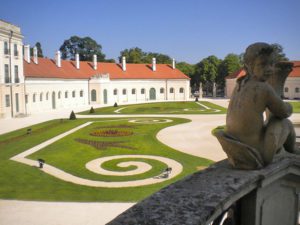
Esterházy summer castle
One pillar of the uniqueness of this World Heritage Site is represented by the inviting atmosphere of the typical wine farming villages that are partly surrounded by old wine cellars. Rust, on the western shore of Lake Neusiedl, is probably the most famous of all, with its historic middle-class houses and white stork nests. Esterházy, the rich noble family, built its prestigious summer castle – a.o. with opera house and puppet theatre – in a tiny village south of Lake Neusiedl. The former workplace of Joseph Haydn is nowadays used for concerts and other cultural events.
Main attractions:
- Visit to Rust, guided walk
- Stopover at the viewpoint over the World Heritage region, near Oggau
- Crossing the border at the historic „Picknick-Place“
- Limestone Quarry
- Stopover at the floodgate of Lake Neusiedl near Mexikopuszta (Fertöujlak), renaturation area
- Visit to Esterházy Castle Fertöd, the place of work of Joseph Haydn for 20 years
Logistics:
Bus drive from the conference venue to Rust (approx. 1 hour one-way). Total walking distance: max. 4 km. Passport required. Please bring your binoculars.
Overarching topic: people and culture / transboundary.
13) The Rich Heritage along the Southwestern Hills: Persian Divinity, Lime Stone Quarry, Vineyards and Forests
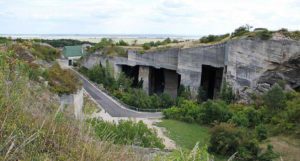
Lime Stone Quarry Fertörakos
Between Fertőrákos (HU) and Mörbisch, close to the border line, a small temple of a Persian godhood of light was found end of the 19th century, dating back to the 1st century when Roman troops settled here. Nearby, a former lime stone quarry is located. From here the huge blocks were transported to the cities of Vienna, Bratislava (Pozsony) and others, to be used for prestigious buildings. Today’s cultural landscape in this part of the World Heritage Site is (still) characterized by vineyards on smaller plots of land.
Main attractions:
- Grotto of Mithras, limestone quarry serving as a concert hall_ View from Fertőboz’ Gloriette over the southern part of Lake Neusiedl
- Hidgseg and its Romanesque church
- The “Puszta” area and its sodic lakes
- Last point: tasting organic wine in Pamhagen
Logistics:
! Starting at 8.00 from Vila Vita !
Bike ride from the conference venue to Fertőrákos (approx. 60 km), crossing the Lake on a ferry boat. Archaeological findings, the geological history and today’s cultural landscape. Passport required. Sturdy shoes are recommended.
Overarching topic: people and culture.
14) Land Use Planning North of Lake Neusiedl: Wind Parks and Green
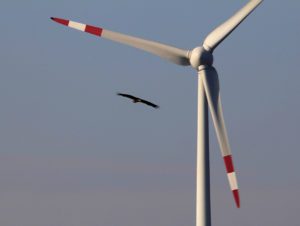
© Hans Martin Berg
Renewable energies are needed more than ever in order to mitigate the threats arising from climate change, but on the other hand the impact on the landscape, on nature and on humans has to be kept as low as possible. The Parndorf Terrace offers excellent conditions for the use of wind power, but it is situated along flyways of birds and migration corridors for mammals – so the government had to find a balance when the development started in the early 1990s. But even today, this agricultural area between Lake Neusiedl and the Danube is exposed to large scale projects for transportation and industry.
Main attractions:
- Introduction to regional planning and the development of wind parks
- Visit to green bridges across the motorway Vienna – Bratislava – Budapest
- See inside a wind power station
- BirdLife’s activities between Lake Neusiedl and the Danube
Logistics:
Bus drive from the conference venue to the Parndorf Terrace (approx. 30’ one-way). Total walking distance: max. 3 km. Wind parks and the space in-between; Alpine-Carpathian Corridor for mammals.
Overarching topic: parks of the future.
15) Managing Natural Heritage through Cultural Heritage – Grazing Valuable Areas in the NP, Breeding Traditional Livestock
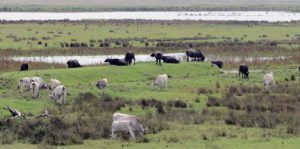
Managing Natural Heritage
From the 1960s farming around today’s National Park area changed in favour of winegrowing, so pastures for the livestock were not needed any longer. At the same time mechanizing of agricultural work caused the decline of stock farming. As a main consequence, less and less pastures survived in the Seewinkel area, and the foreland of Lake Neusiedl was partly overgrown with reeds, bushes and even trees – some of them invasive species. One of the main challenges of the transboundary National Park was therefore to regain the valuable open grassland and wetland by re-introducing grazing. This nature conservation activity enabled the Parks to breed typical Pannonian cattle like the Hungarian Grey Cattle, which became an icon for the region.
Main attractions:
- Visit to the grazing areas on both side of the state border
- Stop at Lászlómajor, a former manor farm, with exhibition on traditional land use
- Introduction to the breeding activities with cattle and sheep
- Last point: tasting beef products from the NP’s Grey Cattle
Logistics:
Bicycle ride from the conference venue to Apetlon and Fertőújlak. Total cycling distance: ca. 30 km. Visit to the grazing areas of the National Park on both sides of the border. Passport required. Please bring your binoculars.
Overarching topic: biodiversity/people and culture/transboundary.
16) Valuable Reed Habitats between Open Water and Littoral Zone
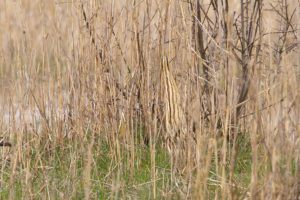
© Schneider
Three major parts of the National Park’s conservation zone are situated along the natural sand dam of Lake Neusiedl, stretching some 20 km from the villages Weiden to Apetlon. Part of them is covered with reeds, from narrow strips near the village Poderdorf to vast „reed islands” in the south. The reed belt shows a high diversity of habitats – not only for birds: mammals, amphibians, fish, and insects have their home here. On the landside of the reeds, habitat management through grazing and reed cutting only takes place in the conservation zone, whereas all the reed belt is an important target area for mapping activities in the frame of the Park’s research activities.
Main attractions:
- Visit to the reed belt of Lake Neusiedl from the landside in the Sandeck area of the Park
- Introduction to the reed belt structure from a birdwatching hide (before 1 p.m.)
- Doing handicraft with a reed (souvenir!)
Logistics:
Bicycle ride from the conference venue to Illmitz. Total cycling distance: ca. 35 km. Gaining an insight into the structure of the vast reed belt of Lake Neusiedl. Please bring your binoculars.
Overarching topic: biodiversity.

